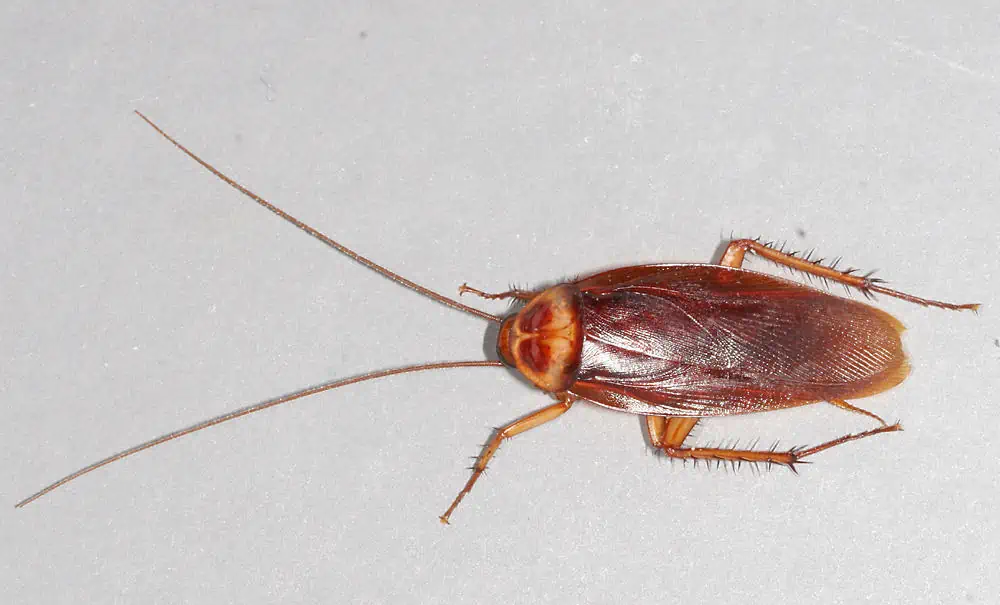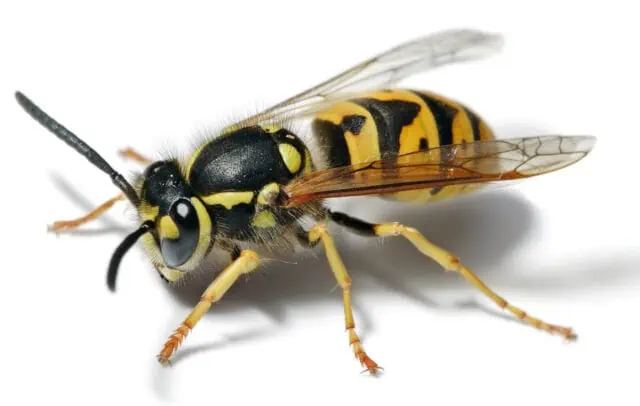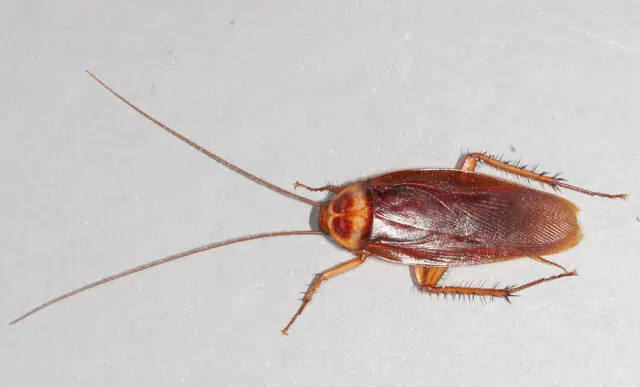Leopard geckos can eat bugs from outside, but it’s essential to be aware of the potential risks involved. Venturing beyond the confines of store-bought feeder insects might seem tempting, offering a more ‘natural’ diet for your gecko. However, wild insects might introduce various dangers.
Can Leopard Geckos Eat Wild Insects and Bugs From Outside?
Leopard geckos indeed have the ability to consume wild insects and bugs from outside, but it’s not always the safest option. Venturing into the wild insect territory can open the doors to numerous potential risks. Wild insects, unlike their store-bought counterparts, are not monitored for diseases or parasites, making them a risky choice for your gecko’s diet.
Eating wild insects can expose leopard geckos to unknown toxins or contaminants, which could be detrimental to their health. They can be carriers of pesticides or other harmful substances, affecting the wellbeing of your gecko, making it crucial to approach this feeding option with caution. Some of these wild insects can be like wasps; others are identical to bugs that you’d get from safe sources.
While the lure of free and seemingly natural food may be enticing, it is generally much safer and more nutritious to source feeder insects from reliable and trusted vendors. These insects are bred in controlled environments, ensuring they are free of diseases and harmful substances. They can also be gut-loaded to maximize their nutritional value for your leopard gecko, making them a wholesome option.
Breeding your own feeder insects is also a viable and often recommended option. This allows for complete control over the insects’ living conditions and diet, ensuring they are safe and nutritious for your leopard gecko to consume.
In essence, while leopard geckos can consume wild insects, focusing on safe, nutritious feeder insects, either purchased from trusted vendors or bred at home, can help in maintaining the health and longevity of your reptilian companion. Balancing safety with nutritional value is key in ensuring a happy and healthy life for your leopard gecko.
| Aspect | Feeder Insects | Wild Insects |
|---|---|---|
| Source | Trusted vendors or self-bred | Outside environments |
| Risk of Contaminants | Low | High, may contain pesticides or other toxins |
| Nutritional Value | High, can be controlled and enhanced | Variable, not guaranteed |
| Safety for Leopard Geckos | High, free of diseases and parasites | Risky, potential carriers of diseases and parasites |
Wild Insects as Food Source
While the concept of using wild insects as a food source for leopard geckos may seem instinctively natural and abundant, it is laden with considerations, risks, and potential benefits.
Are There Any Benefits to Eating Wild Insects?
Exploring the potential benefits of leopard geckos consuming wild insects reveals some intriguing insights. One obvious advantage is the abundance and accessibility of wild insects, offering a seemingly endless supply of food that mirrors the gecko’s natural diet in the wild.
This proximity to nature can contribute to the enrichment of the gecko’s environment and stimulate their hunting instincts, providing not only nourishment but also essential mental stimulation and physical activity.
Additionally, wild insects can offer a variety of nutrients. The diversity in available wild insect species means a diverse range of nutritional profiles, potentially providing a well-rounded diet that caters to the myriad of nutritional needs of the leopard gecko.
Potential Risks
Venturing into the realm of wild insects for leopard gecko food does not come without its share of potential risks. One of the predominant risks is the exposure to toxins. Wild insects may have come into contact with a myriad of harmful substances like pesticides, flame retardants, DDT, and PCB, making them a potentially toxic meal for leopard geckos. These toxins are not exclusive in their harm to leopard geckos but pose serious health risks to humans as well.
For instance, pesticides, designed to control pest populations, can be extremely harmful, leading to a plethora of health issues if ingested by the gecko. Flame retardants, DDT, PCB, and other chemicals, prevalent in various environments, latch onto insects, converting them into carriers of these harmful substances. When consumed, they can cause serious, potentially irreversible damage to the gecko’s health, affecting their nervous system, reproduction, and overall well-being.
Considering the considerable and serious risks involved, it becomes increasingly clear why it is crucial to be extremely cautious when considering feeding wild insects to leopard geckos.
The potential exposure to harmful toxins underscores the importance of either opting for safer, controlled alternatives or meticulously ensuring the absence of contaminants in wild insects before they become a part of the gecko’s diet.
Balancing the pursuit of a diverse, natural diet with the imperative of maintaining the health and safety of the leopard gecko is paramount in responsible reptile care.
| Toxin | Potential Harm to Leopard Geckos | Found In |
|---|---|---|
| Pesticides | Damage to the nervous system, reproductive issues, overall health degradation | Agricultural areas, gardens |
| Flame retardants | Reproductive harm, endocrine disruption | Many household products |
| DDT | Nervous system damage, reproductive harm | Environments with historical pesticide use |
| PCB | Immune system damage, reproductive harm | Older industrial products |
Which Wild Insects Are Safe for Leopard Geckos to Eat?
Determining which wild insects are safe for leopard geckos to consume is crucial in ensuring their well-being. Some wild insects are indeed safe and can offer considerable nutritional benefits. When foraging or identifying wild insects, consider the habitat and the potential exposure to pesticides or other harmful substances to ensure they are safe for consumption.
Crickets, mealworms, butterworms, beetles, and cockroaches are among the top safe wild insects that can be included in a leopard gecko’s diet. Each of these insects has its unique nutritional profile, contributing to the overall health of the gecko.
Crickets: These are excellent protein sources, offering essential amino acids that support muscle development and overall health. They must be appropriately sized, and it is advisable to gut-load them before feeding to enhance their nutritional value.
Mealworms: High in protein and fat, they are great for promoting healthy weight and energy levels but should be offered in moderation due to their high-fat content. Again, gut-loading and proper sizing are essential. Alternatives range from home grown to canned mealworms.
Butterworms: Rich in calcium and protein, they are beneficial for bone health. Their soft bodies make them easy for geckos to digest.
Beetles: These provide a good amount of protein and fiber, supporting digestion and muscular health. However, they should be fed sparingly due to their hard exoskeleton, which can be difficult for leopard geckos to digest.
Cockroaches: Another protein-rich option, they also offer a decent amount of fiber. Ensure they are captive-bred to avoid any risk of disease or parasites.
| Insect | Nutritional Benefits | Considerations |
|---|---|---|
| Crickets | High protein, essential amino acids | Proper sizing, gut-load before feeding |
| Mealworms | High in protein and fat, energy booster | Moderate feeding due to high fat, proper sizing |
| Butterworms | Rich in calcium and protein, promotes bone health | Soft-bodied, easy to digest |
| Beetles | Good protein and fiber, aids digestion | Hard exoskeleton, feed sparingly |
| Cockroaches | Rich in protein and fiber | Use captive-bred to avoid disease risk |
Signs of Illness After Eating Wild Insects
Observing leopard geckos after they consume wild insects is crucial, as some may exhibit signs of illness due to potential exposure to harmful substances or bacteria found in the insects. It’s vital to notice any abnormal behavior or symptoms early to manage and mitigate any health complications that may arise.
Leopard geckos may display a loss of appetite, showing a disinterest in food, or eating significantly less than usual. Digestive issues are also common, manifested through symptoms like abnormal stool or difficulty in passing stool, possibly due to ingested toxins or parasites from the wild insects. Moreover, changes in behavior, such as increased aggression or seclusion, can indicate discomfort or pain.
Specific signs to be vigilant about include significant weight loss, signs of lethargy or decreased energy levels, and the presence of abnormal stool, which could be indicative of internal distress or the presence of parasites. Any of these symptoms warrant immediate attention and possibly a consultation with a veterinarian to determine the cause and appropriate treatment.
| Sign of Illness | Indication | Action Required |
|---|---|---|
| Loss of Appetite | Disinterest in food or reduced food intake | Monitor closely, consult a vet |
| Digestive Issues | Abnormal stool, difficulty in passing stool | Seek immediate veterinary attention |
| Behavior Change | Aggression, seclusion, noticeable discomfort | Monitor and consult a vet |
| Weight Loss | Sudden or significant reduction in weight | Consult a vet immediately |
| Lethargy | Decreased energy levels, unresponsiveness | Seek veterinary consultation |
Feeder Insects vs. Wild Insects
Distinguishing between feeder insects and wild insects is critical when considering dietary options for leopard geckos. While both can be potential food sources, they possess distinct differences that impact their suitability, nutritional value, and safety as a diet component for these reptiles.
How Are They Different?
Understanding the distinctions between feeder insects and wild insects is paramount. Feeder insects, being farm-raised, have the advantage of controlled living conditions and diets, ensuring they are free of harmful substances and are nutritionally balanced. This control allows for a consistent and reliable food source, tailored to meet the nutritional needs of leopard geckos, contributing to their overall health and longevity.
In contrast, wild insects lack this level of control and scrutiny. They are susceptible to contaminants such as pesticides, diseases, and parasites, as they live in uncontrolled environments, exposed to various elements. These factors elevate the risks associated with feeding leopard geckos with wild insects, as the ingestion of harmful substances can lead to health complications.
| Aspect | Feeder Insects | Wild Insects |
|---|---|---|
| Living Conditions | Controlled, monitored environments | Uncontrolled, exposed environments |
| Diet | Controlled, nutritionally balanced | Varied, uncontrolled, potential exposure to harmful substances |
| Risks | Minimized, due to controlled conditions | Pesticides, diseases, parasites due to environmental exposure |
| Consistency and Control | High, due to farming and breeding standards | Low, due to environmental variability |
Advantages and Disadvantages of Feeder Insects vs. Wild Insects
Exploring the pros and cons of both feeder and wild insects gives clarity on their impact on the health and well-being of leopard geckos. Feeder insects hold a substantial advantage in the realm of nutrition due to the process of gut-loading.
This technique allows the feeder insects to be loaded with nutrients that, in turn, get passed on to the gecko, ensuring a balanced and enriched diet. This practice contributes significantly to maintaining a regular, healthy diet, which is crucial for the optimal development and longevity of leopard geckos.
However, while feeder insects are a beacon of nutritional value and safety due to their controlled upbringing, wild insects are a different story. The lack of control and exposure to environmental elements mean that wild insects can carry toxins, suffer bites from other insects, and harbor infections, all of which can be transferred to the gecko.
These risks underline the importance of being meticulous and informed when selecting food sources for leopard geckos, emphasizing the need for a balanced, nutritious, and safe diet.
| Aspect | Feeder Insects | Wild Insects |
|---|---|---|
| Advantages | Nutritional; Safe; Gut-loaded with nutrients | Varied diet; Natural hunting experience |
| Disadvantages | Cost; Limited variety | Toxins; Bites; Infections; Lack of control |







